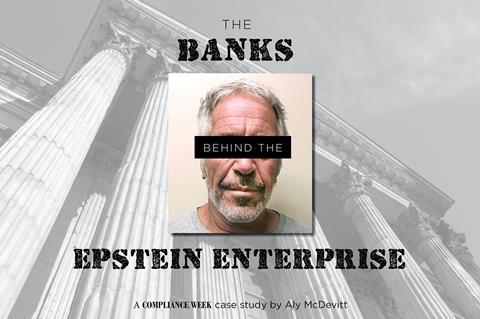Once upon a time, the idea of a single, global set of accounting standards seemed like a visionary concept—one that emanated from the United States to the rest of the world.
That movement—which started as an effort to export U.S. standards and ultimately became a complicated, conciliatory game of "convergence"—seems to have tilted squarely in favor of the International Financial Reporting Standards that are authored by the International Accounting Standards Board. Following Europe’s directive that all EU-listed companies report using IFRS, other countries jumped onto the bandwagon, most notably Australia, Japan, and others. Earlier this year, the United States’ largest and most important trading partner, Canada, snubbed U.S. Generally Accepted Accounting Principles and embraced IFRS, as well.
Now, that dream of a global accounting system has come back to envelop the standards-setting process in the United States, leading participants in the capital markets to wonder if U.S. GAAP will co-exist with the suddenly popular IFRS, or simply cease to exist.
Undoubtedly, U.S. GAAP is losing its luster in the world theater. That is forcing entities like the Financial Accounting Standards Board and the Securities and Exchange Commission to acknowledge—if not outright bend to—international preferences. Increasingly, FASB and the SEC cite a need to harmonize with the rest of the reporting world as cause for particular decisions or rules.
Miller
“More power has shifted to the international board,” says former FASB member Paul Miller, now an accounting professor at the University of Colorado. “When FASB started talking about convergence a dozen years ago, it had a stronger hand,” he says. “FASB now has its hat in hand; it’s still a big player, but it’s taking the U.S. toward international standards instead of drawing international standards toward the U.S.”
That was the same conclusion of an academic group that advised the Canadian Accounting Standards Board to steer Canadian markets toward international rules rather than GAAP.
“It is our assessment that, over the next five to 10 years, one standard-setting body will emerge as the primary standard setter for the world,” wrote the group of academics from the University of Alberta, in a 2004 report to Canada’s rulemakers (see box above, right). “Given the rapid adoption of international accounting standards as promulgated by the IASB, and subject to internal politics in the United States, we believe that this one body will be the IASB.”
Leisenring
James Leisenring, a current member of IASB and former member of FASB, says resistance to change is strong on all fronts and makes it impossible to say whose rules are bending to whose.
“The U.S. thinks they’re making lots of changes to accommodate the rest of the world, and the rest of the world thinks they’re making lots of changes to accommodate the U.S.,” he says. “They’re both resisting, for the same reasons, and each points the finger in the opposite direction.”
With Uniformity Comes Complication
In the United States, FASB’s decision to require companies to expense stock options came partly because it was already required by international rules. At the same time, the IASB’s adoption of GAAP-like rules for derivatives met with outrage in Europe.
To be sure, the decision by the SEC and FASB to seek greater uniformity between GAAP and IFRS has complicated the standard-setting process in the United States. Logistically alone, it adds a new set of factors to every rulemaking project.
Hanson
“With virtually every standard, FASB has to ask ‘What is the international treatment of this item?’ ” says Jay Hanson, national director of accounting for McGladrey & Pullen. “It drags the process out even further, and that’s not helpful. There are a lot of things where guidance is needed, but it is such a long process to get things done.”
Yet in Leisenring’s view, FASB’s sensitivity to international rules makes things “only marginally more difficult.” Even before officially committed to convergence, FASB took international rules into consideration, he contends, because of cross-border listings, both for U.S. companies listing abroad and foreign companies listing on U.S. exchanges.
“There have always been reasons why foreign countries and their circumstances had to be considered,” he says. “It isn’t anything particularly new; it’s just slightly more pervasive now.”
Hanson at McGladrey & Pullen says a give-and-take mentality complicates the process as well, when the two systems have different—but not necessarily better—requirements.
“In the U.S., we tend to have the view that our way is best,” he says. “From a simplistic standpoint, we’d rather not change the way we do it if we can avoid doing so, but everyone’s got to give a little in some places if we really want one system of rules.”
Even more pervasive, however, is the conflict between the U.S. approach to rules, which is heavily prescriptive, and the international approach to provide broad principles and room for professional judgment. European backlash to U.S.-like derivatives rules centered largely on that dynamic, with EU constituents contending the rules were overly complex.
Prescription Versus Principle
Kaiser
That issue of business culture will be tough to overcome, says Gordon Kaiser, a securities attorney with Squire, Sanders & Dempsey. “It’s almost a question of whether accounting ought to be an art or a science,” he quips.
Kaiser argues that challenges in implementing Sarbanes-Oxley requirements—particularly Section 404’s reporting on internal control over financial reporting—have provided a poignant illustration of how the U.S. mentality differs so much from elsewhere. Enron-like failures resulted from heavy adherence to the details of rules while ignoring underlying principles, he contends, yet the SOX legislation intended to prevent future Enrons led to heavy adherence to the details of the new rules, followed by outcries from the market for relief.
“You would think there would be some modification of a rules-based approach to accounting toward principles, but it hasn’t quite worked out that way,” he says. “Initial implementation of the Section 404 experience has been just the opposite.” And that doesn’t seem to be changing; the SEC’s recent compensation disclosure proposal, for example, was a rules-heavy initiative with myriad details packed into a 370-page document.
John Berlau, an economic policy fellow with the Competitive Enterprise Institute, says the United States should abandon the convergence movement and instead seek a system of mutual recognition.
“The best solution is for Europe and the U.S. to allow companies to use either IFRS or GAAP and allow the standards to actually compete with each other,” he says. “Then investors can choose the one they think is best.”
Berlau
Berlau says concern for comparability among companies in different countries is overblown. “There’s no correct or obvious answer on the best way to value land or stock options or depreciate,” he insists. “We shouldn’t force everyone into one box.”
The SEC has mapped out its conditions for mutual recognition, with the goal of allowing IFRS-reporting companies to list in the United States by 2009 without reconciling their accounts to GAAP. Hanson, however, doubts the SEC will ever fully drop its reconciliation requirements. “I’m 49 years old, and I don’t think it will happen during my career,” he says. “There are so many large projects, and it just takes a long time to iron out the differences.”
Whether the SEC ultimately drops its reconciliation requirements or modifies them, most experts believe GAAP will always exist as a distinct accounting system, even if it eventually becomes virtually identical to IFRS.
Leisenring of the IASB declines to speculate when GAAP and IFRS might be regarded as converged, or whether ultimately GAAP will look like IFRS or disappear entirely.
“We just keep plugging away,” he says. “The real issue is whether the capital markets are going to step in and demand that we arrive at a single set of standards for the benefit of the marketplace, and I believe the answer is yes.”
Related resources and coverage can be found in the box above, right.
Websites
We are not responsible for the content of external siteshttp://www.fasb.org/project/conceptual_framework.shtml
http://www.fasb.org/project/bc_acquisition_method.shtml
http://www.fasb.org/project/financial_statement_presentation.shtml
http://www.fasb.org/project/revenue_recognition.shtml
http://www.sec.gov/news/speech/spch040605dtn.htm
http://www.acsbcanada.org/multimedia/Download_Library/Standards/Accounting/English/22_Univ_of_Alberta.pdf
http://www.iasplus.com/dttpubs/2005ifrsus.pdf
http://www.iasplus.com/usa/ifrsus.htm








No comments yet